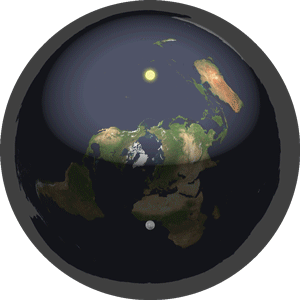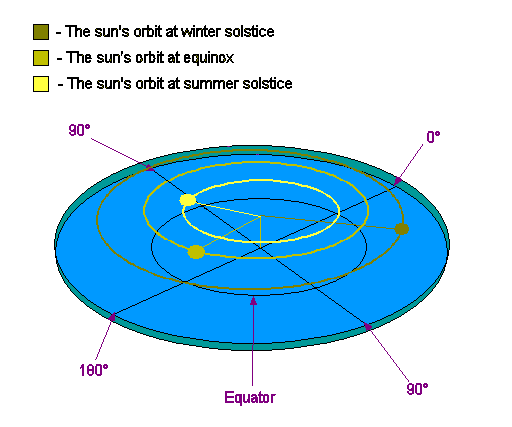Answer
The above gif illustrates the day/night cycles of the sun. The sun, moon, stars, and planetary bodies are all much smaller and much closer to the surface of the earth. Unlike the earth, they are spherical. The sun does not emit light equally in all directions, but acts more like a spot light as seen above. This is due to an effect I call Variable Luminosity: the sun does not necessarily consist of super heated gases (we wont know for sure until real space travel happens), and only certain portions of its spherical face actively emit light. Locked in a circular orbit above the surface of the earth, the downward facing portion of the sun's sphere actively produces light creating its characteristic "spotlight" effect. "But Why Cant We See The Sun At All Times If What You Claim Is True? At Best Earth Would Only Experience Perpetual Twilight. We Can See The Sun Set On The Horizon!" A question I see a lot, this objection forgets an important fact already mentioned: the sun is much smaller and much closer to the Earth's surface. As it moves over the disk of the Earth it recedes from view, much like if you watched a receding car vanish into a horizon like this one:
Can you see the light of a flashlight being directed at you from 20 miles away? Of course not: perspective and atmospheric density combine to obscure its light from view. The same principles are at work when the sun recedes from view, appearing to "set" on the horizon.
"Ok, So What About The Seasons?"
The model for Earth's seasonality is actually quite elegant. Keeping in mind the above gif as an example of the sun's daily motion, consider this illustration:
As this image shows, the seasons are caused by an annual expansion and contraction of the sun's orbit above the disk of the earth. During summer in the northern hemisphere (I use the word "hemisphere" merely for clarity's sake) the suns orbit is at its most contracted point. The gradual transition from summer to winter in the north corresponds to the sun's steady, outward orbital expansion. Once the sun's orbit it at its widest, the southern hemisphere experiences summer. This makes more sense than an axial "tilt" taking place on a spherical earth: such a change would necessarily cause noticeable physical effects such as a directional change in the flow of rivers. This is not the case. Explaining the seasons using the Flat Earth model represents a more coherent synthesis of empirically demonstrable phenomena...



No comments:
Post a Comment